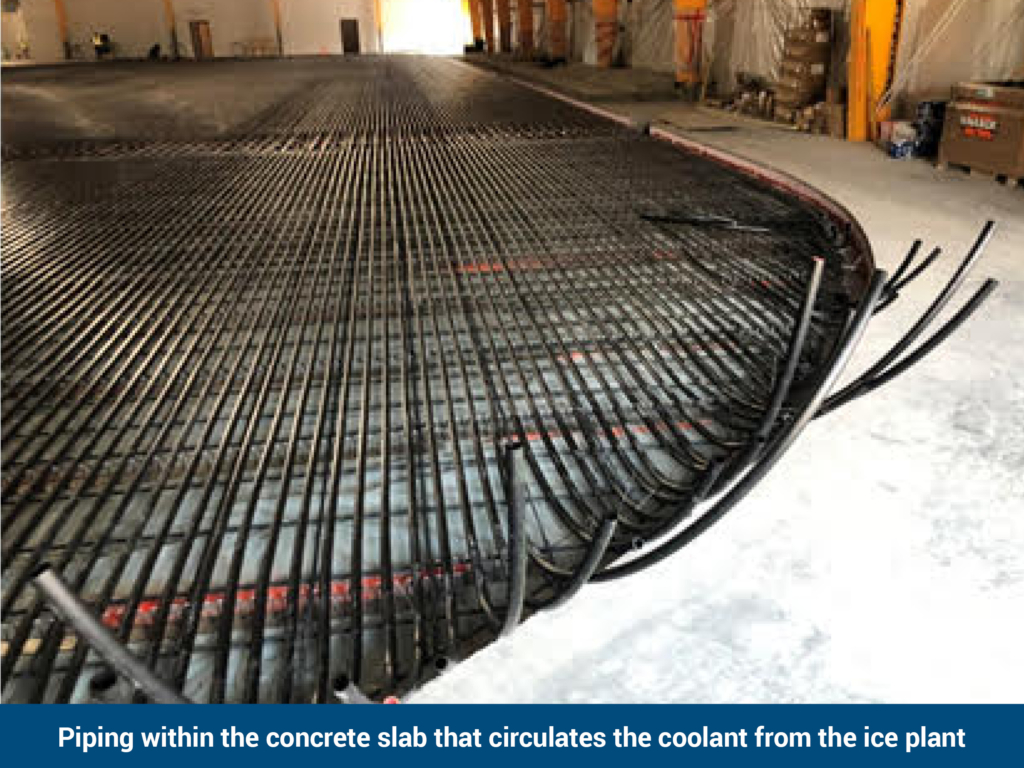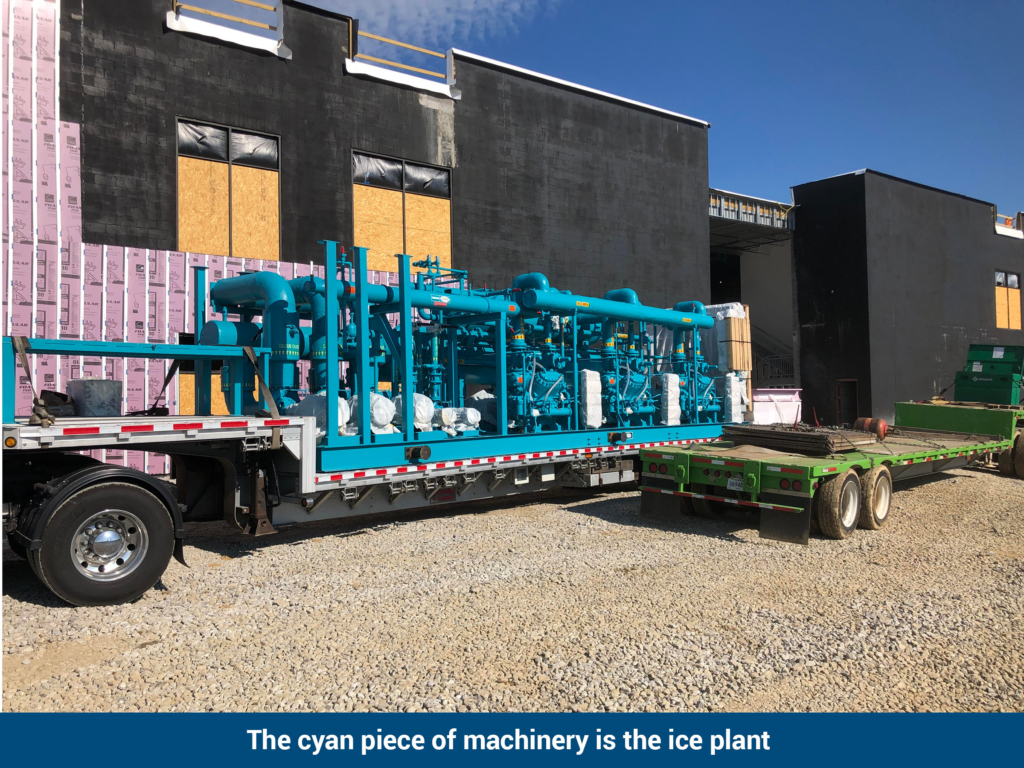Designing an Ice Facility? – Consider this.
Have you ever had to move your refrigerator temporarily to clean the dust from behind? I usually find myself particularly motivated to do this while studying for an exam, but that’s for a different time. If you have ever moved your refrigerator, then you have noticed how hot the exterior of the refrigerator is adjacent to the cooling element. This cooling element is designed to keep about 10 cups of ice cubes and a freezer full of goods frozen. Now, can you imagine a refrigerator cooling unit large enough to freeze a solid sheet of ice 200 feet long, 85 feet wide and an inch and a half thick? Oh, and don’t forget to account for the heat from the spectators, participants, and air handling units. If you guessed that it would fit almost perfectly on the back of a semi, then you would be correct. This larger-than-life cooling unit has its own room larger than most tiny homes (to provide maintenance access). This unit allows us to put the “ice” in ice-center.
This ice plant not only keeps the ice cold through a radiator like system within a concrete slab directly below the ice, but also keeps the soil below the concrete slab, gravel, and insulation warm. That’s right! The heat from the ice plant is recycled and piped several feet below the entire rink to ensure the fill and earth below the ice maintains a consistent temperature year-round. This alleviates any concern with freeze thaw, concrete cracking unexpectedly, or general maintenance below the cooling units. I am holding back many… oh so many details.
At Lose Design we create Spaces for Life. Everything we do is centered around enhancing the quality of the human experience. Recreation facilities, and specifically ice facilities, provide unparalleled opportunity for doing just that. Lose Design has completed two ice facilities in middle Tennessee and has performed multiple planning and feasibility studies for cities in the Nashville Predators target market area. We have a lot to share. Please reach out and we would love to answer any questions, from air handling and humidity to dasher boards, to Zamboni fuels and oil separation. Let’s talk ice.
Joshua A. Gulick, PLA, ASLA
Associate Vice President
Lose Design


